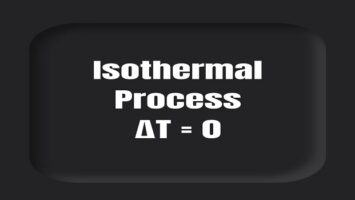Q Value of a Nuclear Reaction:
The energy released or absorbed during a nuclear reaction is called the Q value of the reaction.
OR
The quantitative analysis of any nuclear reaction in terms of masses and energies of reactants (target and projectile) and products (product nucleus and outgoing particle) is called the Q value of the reaction.
Consider a typical nuclear reaction-
| X + x ———-> Y + y Where, X = Target Nucleus x = Projectile Y = Product Nucleus y = Outgoing Particle |
Let MX, mx, MY, my and EX, Ex, EY and Ey be the masses and kinetic energies of the target, projectile, product nucleus and outgoing particle respectively.
We know that the total energy is the sum of rest mass energy and kinetic energy. But for the target nucleus, the total energy is not only rest mass energy (MX c2) because it is assumed to be at rest (EX = 0).
∴ According to the Law of Conservation of Energy, we can write,
| MX c2 + (mx c2 + Ex) = (MY c2 + EY)+ (my c2 + Ey) or (EY + Ey) – Ex = [(MX + mx) – (MY + my)] c2 or Q = (EY + Ey) – Ex ⇒ Q = [(MX + mx) – (MY + my)] c2 |
Case I: If (EY + Ey) > Ex ⇒ (MX + mx) > (MY + my) i.e. Q has a positive value, thus energy is released and the reactions are exothermic or exoergic.
Case II: If Ex > (EY + Ey) ⇒ (MY + my) > (MX + mx) i.e. Q has negative value and energy is absorbed, thus reactions are endothermic or endoergic.
Case III: If Ex = (EY + Ey) ⇒ (MX + mx) = (MY + my) i.e. Q has zero value and there is no release or absorption of energy, i.e. elastic collision.
Define Nuclear Cross-Section:
The nuclear cross-section is a measure of the probability that a collision will occur in a nuclear interaction i.e. (measure of probability of nuclear reaction). It is denoted by σ and is given as-
| σ = R/R0Anx Where, R = Rate at which collision events occur with target nuclei R0 = Rate at which incident particles strike the foil. n = number of target nuclei/unit volume. x = width of target foil. “σ” is expressed in units of a bar. 1 bar = 10-28 m2 |









Comments (No)